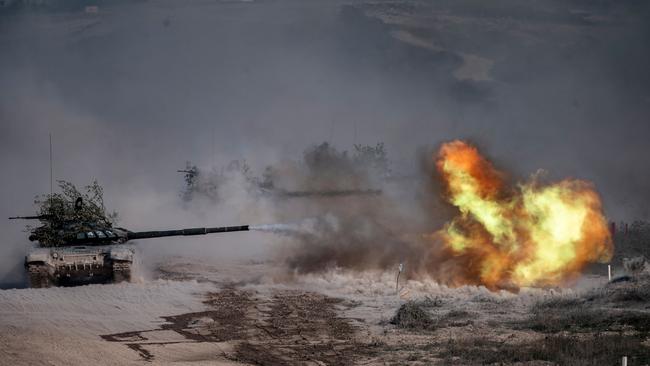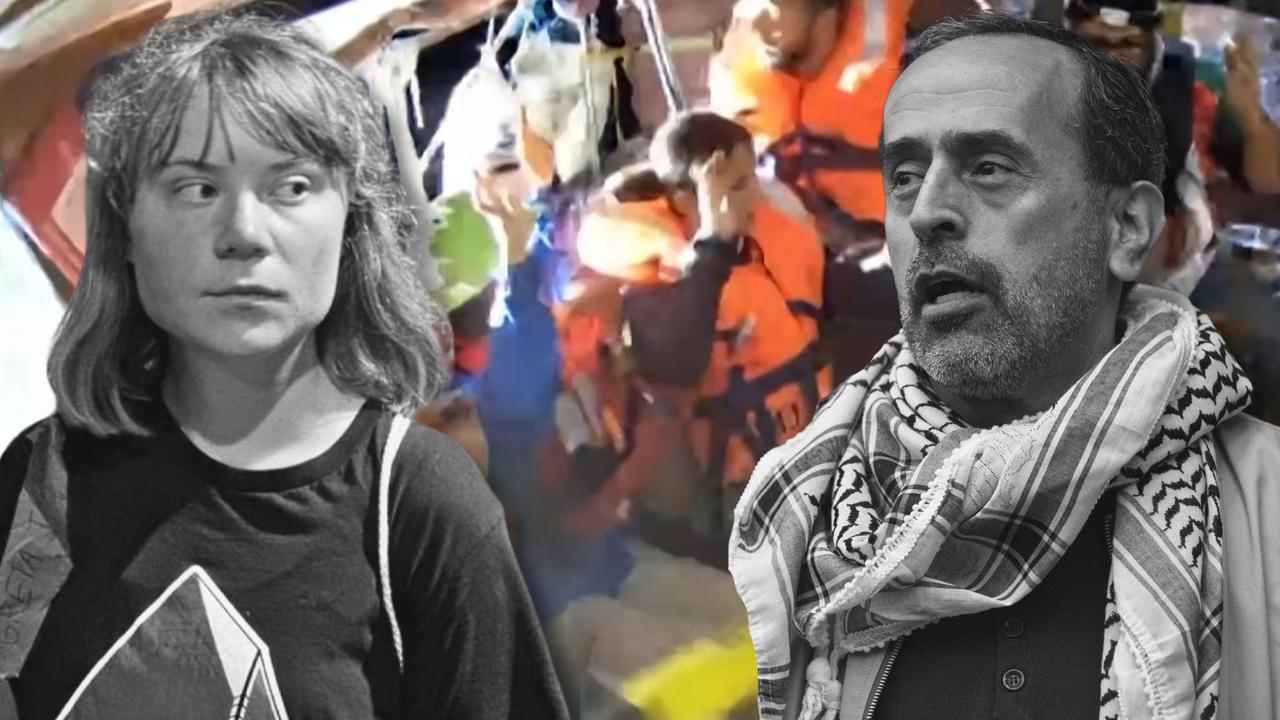Russia’s war games unite West-weary allies
Vladimir Putin will oversee military exercises as Russia stages a series of drills with allies amid fresh tensions with the West.

President Vladimir Putin was to oversee military exercises on Friday as Russia stages a series of drills with China and other allies amid fresh tensions with the West.
The largest of these games, Caucasus-2020, kicked off in southern Russia this week and include land and naval exercises involving 80,000 people, including more than 12,000 troops.
China, Iran and Myanmar are taking part along with Armenia and Belarus. The Kremlin announced Mr Putin would attend the drills on Friday.
“These exercises are the main annual test of the Russian armed forces’ readiness to engage in a large-scale conflict,” said Vasily Kashin, a Moscow-based military analyst. The drills that end on Saturday and feature naval deployments on the Black Sea and the Caspian have been organised “for the top echelons of the military leadership”, he said.
According to the defence ministry, up to 250 tanks and about 450 infantry combat vehicles and armoured personnel carriers are taking part in the drills along with artillery systems and rocket launchers.
The Russian forces will test the TOS-2 heavy flamethrower systems first paraded through Moscow’s Red Square during Victory Day celebrations in June.
Mr Putin has made reviving the army one of the priorities of his 20-year rule. After years of post-Soviet neglect, the armed forces received new aircraft, tanks and missiles, opened new bases in the Arctic and resumed Cold War-style strategic bomber patrols.
Moscow has staged frequent large-scale military exercises in the Caucasus, the Baltic and the Arctic in recent years. In 2018, Russia held what it has called its largest military drills, with 300,000 Russian troops joining Chinese soldiers in a show of force condemned by NATO.

Russia’s drills this autumn are also viewed as a show of support for Belarusian strongman Alexander Lukashenko, who has faced unprecedented protests against his disputed re-election last month and was sworn in during a secret ceremony Wednesday.
Running parallel to the Caucasus-2020 games, the joint Russian-Belarusian drills dubbed Slavic Brotherhood began in mid-September and involve more than 900 Russian troops.
The drills were launched near Belarus’s southwestern city of Brest on the Polish border. As part of the games, two Russian supersonic heavy strategic Tu-160 bombers flew over Belarus’s border with the EU this week.
Mr Lukashenko has accused Poland and the Baltic states of co-ordinating with the opposition and has claimed Western countries see Belarus as a “springboard” to attack Russia.
Next month Belarus will also host drills by the six member states of a Russia-led security bloc, the Collective Security Treaty Organisation.
Ukraine, whose army is fighting Moscow-backed separatists in the east of the country and launched its own exercises with NATO, has said Russia’s Caucasus games constitute a serious threat.
NATO patrols the Black Sea where Ukrainian and Russian gunboats have clashed in waters near Crimea after the territory was annexed in 2014.
Several countries have pulled out of military exercises with Russia this year, with New Delhi citing the coronavirus pandemic but observers pointing to its frayed ties with China. Moscow’s ally Serbia dropped out of drills in Belarus after what Belgrade called “great and undeserved pressure” from the EU.
Russia insists the purpose of its “purely defensive” exercises are to ward off a theoretical enemy, but sees the games as an opportunity to show off its military prowess.
Moscow is carrying out a costly overhaul of the country’s military and has tested a number of new additions to its arsenal in Syria since entering the conflict in 2015.
Compared to 2016, when the Caucasus games were last held, Russia has added more drones and artillery to its military as well as fighter jets and air defence systems like the renowned S-400, Kashin said.
Mr Putin has also lauded new “invincible” nuclear-capable weapons, which have yet to be shown off in drills. Mr Kashin raised the possibility that one of the new weapons — the Kinzhal hypersonic missile — could be tested during Caucasus-2020 as well as the fifth-generation Su-57 fighter jet, which has been anticipated for several years.
AFP







To join the conversation, please log in. Don't have an account? Register
Join the conversation, you are commenting as Logout